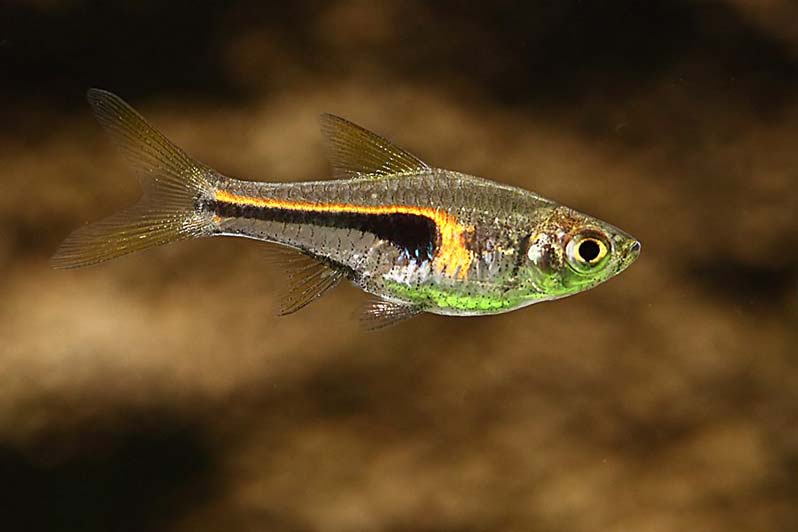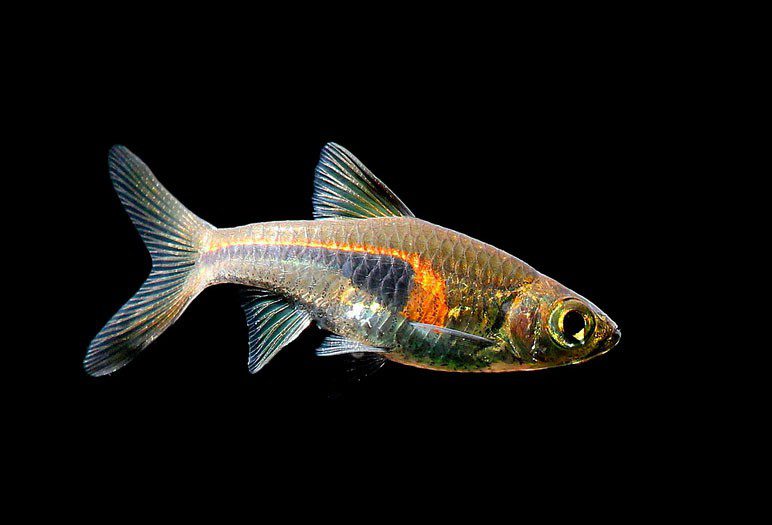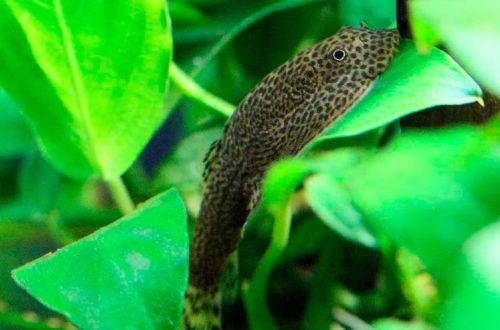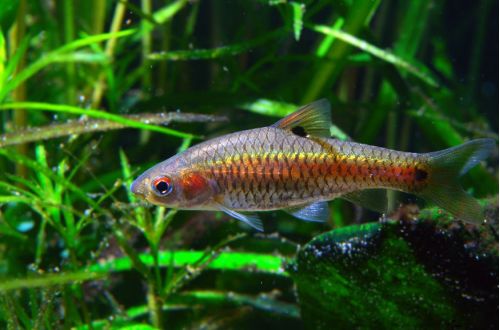
Rasbor Hengel
Luminous Rasbora or Rasbora Hengel, scientific name Trigonostigma hengeli, belongs to the Cyprinidae family. A beautiful little fish, on its side has a bright stroke, like a neon spark. A flock of such fish gives the impression of flickering in good lighting.

This species is often confused with related species of rasbora such as “Rasbora espes” and “Rasbora harlequin”, due to their similar appearance, until 1999 they really belonged to the same species, but later they were separated into separate species. In most cases, in pet stores, all three species are sold under the same name, and amateur sites dedicated to aquarium fish are full of numerous errors in the description and accompanying images.
Requirements and conditions:
- The volume of the aquarium – from 40 liters.
- Temperature – 23-28°C
- Value pH — 6.0–6.5
- Water hardness – soft (5–12 dH)
- Substrate type – any dark
- Lighting – subdued
- Brackish water – no
- Water movement – weak or still water
- Size – up to 3 cm.
- Meals – any
- Life expectancy – from 2 to 3 years
Habitat
Rasbora Hengel received a scientific description in 1956, comes from Southeast Asia, is common in the Malay Peninsula, the Sunda Islands, Borneo and Sumatra, as well as in Thailand and Cambodia. In nature, these fish are found in large flocks, sometimes filling slowly flowing streams. The fish mainly live mainly in forest streams and rivulets, the water in which has a brownish tint due to the high concentration of tannins formed as a result of the decomposition of organic residues (leaves, grass). They feed on small insects, worms, crustaceans and other zooplankton.
Description

A small slender fish, reaching a length of no more than 3 cm. The color varies from translucent ivory to pink or orange, the fins have a lemon yellow tint. The main distinguishing feature is a thin black marking along the back half of the body, above which is a bright line, like a neon flourish.
Food
An omnivorous species, in a home aquarium, the diet should be based on quality dry food from trusted manufacturers. You can diversify with live food such as brine shrimp or bloodworms. During feeding, the rasboras behave in an interesting way, they swim up to the feeder, grab a piece of food and immediately dive to a shallow depth to swallow.
Maintenance and care
Special conditions and expensive equipment are not required, it is enough to periodically renew the water and clean the soil from organic residues. Since the fish come from slow-flowing rivers, strong filtration in the aquarium is not required, as well as strong aeration. Lighting is moderate, bright light will depress the color of the fish.
In the design, preference should be given to dense plantings of plants that reach the height of the surface of the water. It should be placed along the walls to leave free space for swimming. Floating plants provide additional shade. The soil is dark, natural driftwood is recommended as an additional decor, which will become a source of tannins, which will bring the composition of the water closer to natural conditions.
Social behavior
Schooling fish, you should keep at least 8 individuals. Within the group there is a hierarchy of subordination, but this does not lead to skirmishes and injuries. Behave friendly towards each other and neighbors in the aquarium. Males display their best coloration in the company of females as they compete for their attention. In the company of Rasbora Hengel, you should select the same small active fish, you should refrain from acquiring large fish that can be perceived as a threat.
Breeding / breeding
Breeding has certain difficulties, but largely repeats the procedures required for Rasbora Espes. Spawning is recommended to be carried out in a separate tank, since certain conditions are required: water is very soft (1-2 GH), slightly acidic 5.3–5.7, temperature 26–28°C. Filtration is sufficient to carry out a simple airlift filter. In the design, use broad-leaved plants, coarse gravel soil, the particle size of which is at least 0.5 cm. Fill the aquarium with a maximum of 20 cm and set low lighting, enough light from the room.
Several heterosexual pairs of pair fish are introduced into the spawning aquarium, where they are fed live food or dry food with a high protein content. The temperature is near the maximum allowable mark and the abundance of food will give rise to spawning. After the mating dance, the male will accompany the female to the plant he has chosen, where the eggs will be deposited on the inner surface of the leaf. At the end of spawning, the parents should be removed back to the community tank, and the water level in the spawning tank should be lowered to 10 cm. Make sure that the eggs are still below the water level. The fry appear in a day, and after another 2 weeks they begin to swim freely in the aquarium. Feed with microfood, Artemia nauplii.
Diseases
In favorable conditions, diseases are not a problem, however, changes in the hydrochemical composition of water (primarily pH, GH) and poor nutrition lead to the risk of diseases such as dropsy, fin rot and ichthyophthyriasis. Read more about symptoms and treatments in the Fish Diseases section.





